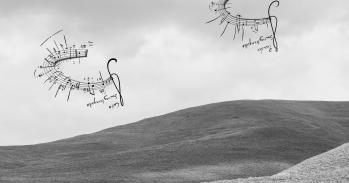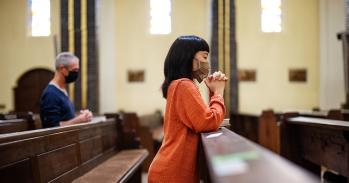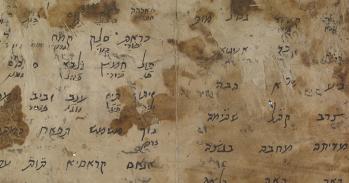Some of the world’s most important religious texts are currently on display in Cambridge as part of Cambridge University Library’s 600th anniversary exhibition – Lines of Thought: Discoveries that Changed the World.
Some of the world’s most important religious texts are currently on display in Cambridge as part of Cambridge University Library’s 600th anniversary exhibition – Lines of Thought: Discoveries that Changed the World.
For his pains, Tyndale was strangled and burnt as a heretic two years after this translation was published.
Will Hale
As part of its 600th celebrations, the University Library has made a series of six films – one for each of the six themes explored in Lines of Thought – with the latest film: Communicating Faith taking a close look at some iconic religious treasures across all the major faiths including Christianity, Islam and Judaism.
The oldest item in Communicating Faith is a text for prayer, the so-called Nash Papyrus. Dating from the second century before Christ, the fragments on display in Cambridge contain the Ten Commandments and until the discovery of the Dead Sea Scrolls, it was the oldest surviving manuscript of any part of the Hebrew Bible.
However, one of the oldest and perhaps the most valuable items in the Library’s collections – and perhaps one of the stars of Lines of Thought – is a recovered text called the Codex Zacynthius.
Codex Zacynthius is a parchment book where the leaves have been scraped and rewritten (a palimpsest). What they rewrote was an 11th or 12th century text from the gospels, but underneath it is a very early text of the gospel of St Luke. This very early undertext was first deciphered in the 19th century. It’s now possible, using modern imaging techniques, to get a much more precise image of what this book would have looked like when it was written in the 6th or 7th century. Work will continue on the codex when the exhibition comes to an end in September.
The translation of religious texts has always been central to the transmission of faith across barriers of religion and culture, but could be a perilous activity. William Tyndale’s English translation of the New Testament ultimately cost him his life. His pioneering translation survived, however. In 1611, the team of Cambridge scholars and theologians tasked with helping to prepare the text of the authoritative King James Bible drew heavily on Tyndale’s work.
Will Hale, who curated Communicating Faith, said: “Our copy of Tyndale’s New Testament was printed in Antwerp in 1534. Translating the Bible was an act of heresy at the time according to the mainstream church who thought the one true translation was the Vulgate into Latin and only the church had the right to interpret it to the people. Tyndale felt that even the ploughboys at the plough should be able to recite scripture in their own language. And of course, for his pains, he was strangled and burnt as a heretic two years after this translation was published.
“Today’s academics are exploiting digital technology to unearth new secrets from documents penned in antiquity. Cutting-edge multispectral imaging allows us to read texts erased from a seventh-century manuscript of the Gospel of Saint Luke, whilst dispersed collections of fragments of manuscripts from a Cairo synagogue are being painstakingly reunited in the digital realm.”

The text in this work is licensed under a Creative Commons Attribution 4.0 International License. For image use please see separate credits above.




